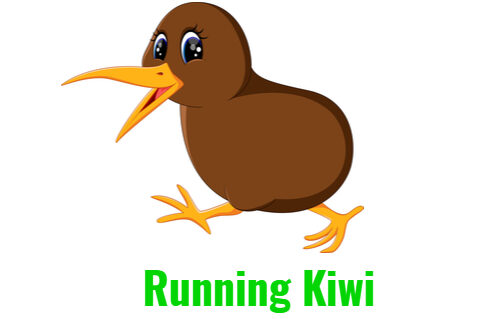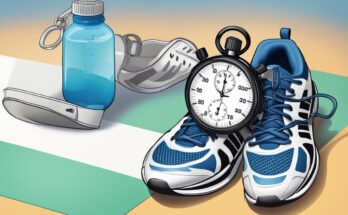Running is a popular form of exercise that has been linked to numerous health benefits. However, when it comes to getting rid of a cold, opinions are divided. Some people believe that running can help clear up a stuffy nose and alleviate other symptoms, while others think that it can make the cold worse. This article aims to explore whether running is an effective way to get rid of a cold.
While there is no scientific evidence to suggest that running can cure a cold, some studies have shown that exercise can boost the immune system and help fight off infections. In fact, moderate exercise has been found to reduce the risk of respiratory infections by up to 50%. However, it is important to note that this does not mean that running will cure a cold. It may help to prevent future infections, but it is unlikely to provide immediate relief from cold symptoms.
Despite this, many runners report that they feel better after a run, even when suffering from a cold. This could be due to the release of endorphins, which can boost mood and reduce pain. Additionally, getting some fresh air and sunlight may help to improve overall well-being. However, it is important to listen to your body and avoid pushing yourself too hard, as this can make the cold worse and prolong recovery time.
What is a Cold?
A cold is a viral infection that affects the upper respiratory system, including the nose, throat, and sinuses. It is one of the most common illnesses and can be caused by more than 200 different viruses. The symptoms of a cold usually develop within one to three days after exposure to the virus and can last for up to two weeks.
The most common symptoms of a cold include a runny or stuffy nose, sore throat, cough, congestion, and fatigue. In some cases, a person may also experience a fever, although this is more common in children than adults.
Colds are highly contagious and can be spread through the air when an infected person coughs or sneezes. They can also be spread by touching a surface contaminated with the virus and then touching one’s nose or mouth.
There is no cure for a cold, but there are several things that can be done to help manage the symptoms. Drinking plenty of fluids can help prevent dehydration, while over-the-counter medications such as pain relievers and decongestants can help relieve symptoms such as fever, aches and pains, and congestion.
Home remedies such as honey, saltwater gargles, and nasal saline sprays may also provide some relief. However, it is important to listen to your body and rest if needed, as pushing oneself too hard can prolong the duration of the illness.
It is important to note that antibiotics are not effective in treating colds, as they only work against bacterial infections. Additionally, people with underlying medical conditions such as asthma or heart disease may experience more severe symptoms and should seek medical attention if they experience difficulty breathing or other concerning symptoms.
Overall, while running may not directly cure a cold, staying active and maintaining a healthy lifestyle can help boost the immune system and prevent illness in the long term.
Can Running Help Get Rid of a Cold?
The Benefits of Exercise
Many people believe that exercise, including running, can help get rid of a cold. While there is no cure for the common cold, exercise can offer several benefits that may help alleviate symptoms and speed up recovery.
Firstly, exercise can help boost the immune system, which can help fight off the virus causing the cold. Additionally, exercise can help improve circulation, which can aid in clearing out congestion and promoting healing. Exercise can also help reduce stress and promote better sleep, both of which can help the body better fight off illness.
The Risks of Exercise with a Cold
While exercise can offer benefits when it comes to dealing with a cold, there are also risks to consider. Running or exercising with a cold can put additional strain on the body, which can exacerbate symptoms and make it harder for the body to fight off the virus.
One of the biggest risks of exercising with a cold is dehydration. When the body is fighting off an illness, it needs extra fluids to stay hydrated. Exercising can cause the body to lose fluids through sweat, which can lead to dehydration and make it harder for the body to recover.
Additionally, exercising with a cold can put extra strain on the chest and lungs, which can lead to chest pain and difficulty breathing. It can also lead to body aches and fatigue, which can make it harder to complete an exercise routine.
Conclusion
While exercise, including running, can offer several benefits when it comes to dealing with a cold, it is important to listen to the body and take things slow. Walking or gentle yoga may be better options for those dealing with chest congestion or other cold symptoms. It is also important to stay hydrated and take rest days when needed to allow the body to recover.
Other Ways to Treat a Cold
When it comes to treating a cold, there are a variety of options available. While running may help alleviate some symptoms, it is not a cure-all solution. Here are some other ways to treat a cold:
Rest and Fluids
One of the most important things you can do when you have a cold is to get plenty of rest and stay hydrated. This can help your body fight off the virus and reduce symptoms such as fatigue and headache. Drinking warm liquids like tea or chicken soup can also help soothe a sore throat and provide hydration.
Medications and Supplements
Over-the-counter medications such as pain relievers and decongestants can help alleviate symptoms such as fever, headache, and congestion. Zinc and vitamin C supplements have also been shown to potentially shorten the duration of a cold. However, it is important to talk to a healthcare provider before taking any new medications or supplements.
Home Remedies
There are a variety of home remedies that can help alleviate cold symptoms. Gargling with salt water can help soothe a sore throat, while honey can help alleviate coughing. Using a cool-mist humidifier can also help reduce congestion and ease breathing.
When to See a Doctor
While most colds will go away on their own within a week or two, it is important to see a doctor if symptoms persist or worsen. This is especially important if you have a fever, difficulty breathing, or chest pain. The Centers for Disease Control and Prevention also recommend seeing a doctor if you are at a higher risk for complications from a cold, such as young children, older adults, or individuals with weakened immune systems.
Overall, while running may provide some relief from cold symptoms, it is important to take a multifaceted approach to treatment. Rest, fluids, medications, and home remedies can all help alleviate symptoms and promote healing.




